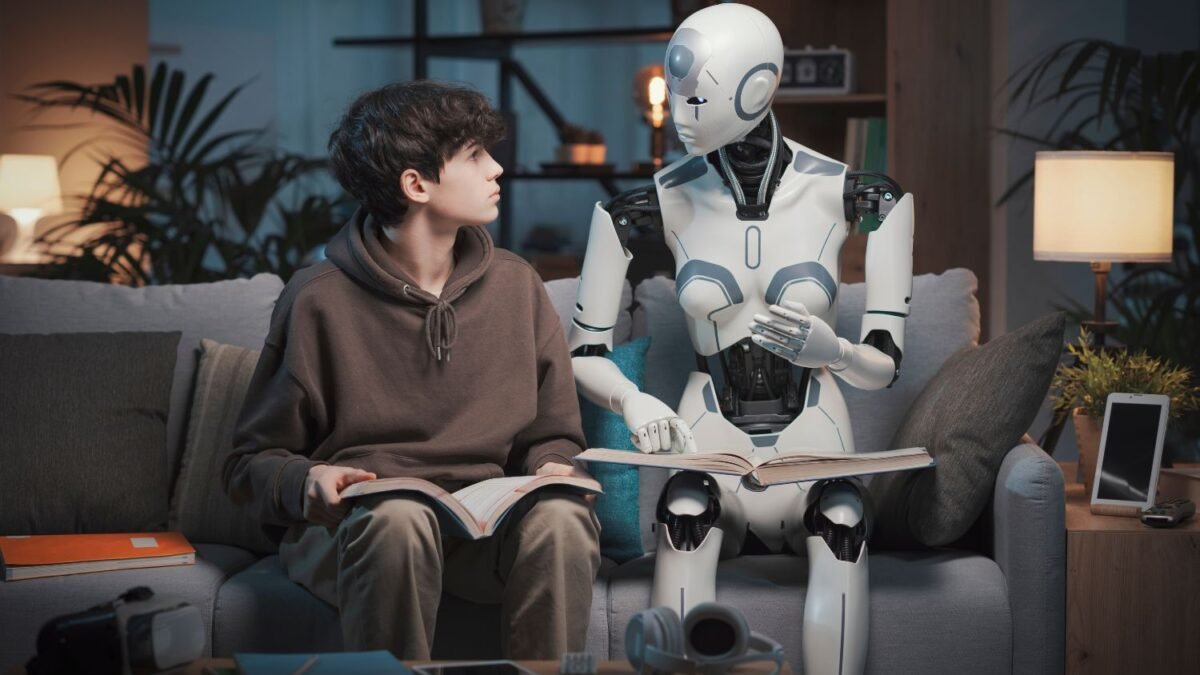The Juicy Truth Behind Why AI Hasn’t Taken Over Yet

It’s a ticking time bomb in the global economy, and every CEO knows it: AI is already powerful enough to replace millions of jobs. So why haven’t the mass layoffs started yet? The answer has little to do with technology and much to do with fear. Corporate leaders are silently waiting to see who will be the first to pull the trigger.
### Corporate Leaders Avoiding the First Move
The problem is that the second group is several steps behind. The AI revolution is not being stalled because the technology is not ready. It is being stalled for political reasons. CEOs are nervously eyeing each other, waiting for someone else to take the first step and announce that they are eliminating a significant number of jobs because AI can do the work faster and cheaper. They are avoiding what they already know and sending subliminal signals about their intentions.
Look at Palantir’s CEO, Alex Karp. During an interview with CNBC in August, he said: “We are planning to grow our revenue… while reducing our number of people.” He then continued: “This is a crazy and efficient revolution. The goal is to increase revenue by 10 times and have 3,600 people. We currently have 4,100.” The subtext is clear: Palantir already considers 500 of its employees to be surplus that AI could replace. They could increase their revenue by 10 while reducing their workforce by almost 12.2%.
### Impact on the Job Market
Look at Amazon. The company has over a million robots (Hercules, Pegasus, and Proteus, its fully autonomous robot) in its facilities and believes that AI will help increase the mobility of its robots by 10%. The number of robots is almost equivalent to the 1.546 billion people (full-time and part-time) the company employs globally. CEO Andy Jassy has already warned his workforce about what is to come.
“We will need fewer people doing some of the jobs that are being done today and more people doing other types of jobs,” Jassy told employees in a memo last June. “It’s hard to know exactly where this will end up over time, but in the coming years, we expect this to reduce our total workforce.”
### Political Reaction to the AI Revolution
CEOs are waiting for political coverage that will not come. None of them want to be the face of the revolution that destroys human jobs in America. They do not want to become the target of political attacks, knowing that on this issue, attacks will come from both populist left and populist right. The problem is that politicians are as unprepared as those over the age of 35. They seem to believe that this is a problem for the next administration, a challenge for some years in the future. They are wrong. The problem is already here. The questions are urgent: what will displaced workers do? What safety nets need to be built? What about the health of millions of people who are still far from retirement? These are questions that politicians have not yet addressed, probably because they do not have the answers. So, for now, CEOs are buying them time.
Instead of mass layoffs, a quieter trend has emerged: hiring freezes. More and more managers are being forced to justify. This is already devastating the job market for young people. According to Handshake, a career platform for Gen Z employees, job offers for entry-level corporate roles have decreased by 15% in the last year. And for those who still think the big displacement is far off, the outplacement firm Challenger, Gray & Christmas reported a few days ago that AI is already one of the top five factors contributing to job loss this year. Private sector companies have announced over 806,000 job cuts since January, the highest number for this period since 2020. The tech industry is leading the charge.
### The AI is Already in Motion
The machine is in motion. It’s not that AI can’t replace us, especially in knowledge jobs. The problem is that your boss still doesn’t have the courage to tell you that you’re being fired by a robot. They don’t want to be the villains. They are waiting for one of their colleagues to be crucified before stepping onto the stage. But for how long?




